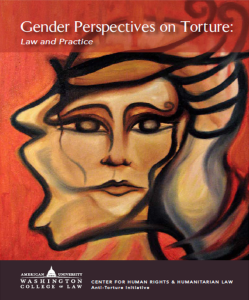I once asked a Guatemalan public defender how she knew when a woman’s murder was the result of gender-based violence and not a simple homicide. She showed me several pictures of women’s half or fully naked bodies exhibiting obvious signs of torture, mutilation, and violent sexual assault prior to their deaths. She said that was how women’s bodies were usually found. That was the difference between gender-based violence and simple homicide. Women’s bodies are often used as instruments to send messages of terror, or as instruments of pleasure, or as instruments of experimentation. In all of these cases, gender-based violence is recognizable because of its profound denial of personhood. The common thread running through the collection of articles presented in this publication is that women’s bodies are still looked at and treated as instruments, or means to achieving a goal, rather than as autonomous individuals. Killing a body to end a life is different than killing a body to send a signal. In both cases, the person is refused her or his basic right to life, but in the latter, the person is a mark, a sign for others to see and use.
This is how Macarena Saéz introduces the book Gender Perspectives on Torture: Law and Practice, a publication issued by the Center for Human Rights & Humanitarian Law: Anti-Torture Initiative at the Washington College of Law at the American University.
List of Contents:
Preface: Macarena Sáez
xi Introduction: Juan E. Méndez
xv Foreword: Dubravka Šimonović
1 I. GENDER-BASED VIOLENCE: STATE RESPONSIBILITY
3 The Vital Voices Justice Institute: Helping States Combat Gender-Based Violence
Gigi Scoles and Anupama Selvam
19 Reparations for Sexual and Other Gender-Based Violence
Carla Ferstman
33 How Non-State Torture is Gendered and Invisibilized: Canada’s Non-Compliance with the Committee Against Torture’s Recommendations
Jackie Jones, Jeanne Sarson, and Linda MacDonald
57 The Importance of Investigating Torture Against Women and Girls by Non-State Actors: Applicable Legal Standards from International Human Rights Law
Teresa Fernández Paredes
87 II. GENDER AND SEXUALITY AS THE BASIS FOR SPECIFIC HARMS
89 Murdered in the Name of “Honor”
Aisha K. Gill
105 Female Genital Mutilation as a Form of Torture and Other Cruel, Inhuman, or Degrading Treatment or Punishment”: Intersections with the Migration Context
Els Leye and Ino Kehrer
123 Pregnancy and Virginity Testing in Educational Settings and the Torture and Other Ill-Treatment Framework
Esther Major
139 Forced Contraception as a Means of Torture
Christie J. Edwards
161 The Humanisation of Women: A Work in Progress
Purna Sen
183 Gendering the Lens: Critical Reflections on Gender, Hospitality and Torture
Mauro Cabral Grinspan and Morgan Carpenter
197 III. GENDER, SEXUALITY AND DEPRIVATION OF LIBERTY
199 Crime and Multiple Punishments: The Vulnerability of LGBTI Persons in the Criminal Justice System
Jean-Sébastien Blanc
217 Women in the Criminal Justice System and the Bangkok Rules
Therese Rytter and Andrea Huber
239 Mothers Behind Bars: Reflecting on the Impact of Incarceration on Mothers and
their Children
Maria Eva Dorigo
257 Making the Global Local, and the Local Global: Lessons Learned
Brenda V. Smith
263 IV. HEALTHCARE AND REPRODUCTIVE RIGHTS
265 Reproductive Rights Violations as Torture or Ill-Treatment
Katherine Mayall, Onyema Afulukwe, and Katrine Thomasen
279 Torture and Ill-Treatment: Forced Sterilization and Criminalization of Self-Induced Abortion
Cynthia Soohoo and Farah Diaz-Tello
295 V. ANNEX
297 Gender perspectives on torture and other cruel, inhuman and degrading treatment or punishment (A/HRC/31/57)
Juan E. Méndez

